This has been a piece a long time in the making, ever since the news of Pernod Ricard partnering with Del Maguey broke almost exactly a year ago on June 7th 2017, and changed the landscape of the mezcal category. It has been just a year, but what a year it has been, and the changes have been cataclysmic for mezcal. I don’t think any of us could have predicted the speed at which other multinational spirit companies would enter the space and how quickly it would impact not only mezcal production. While mezcal remains a tiny portion of the spirits industry, less than 1%, its year over year growth and visibility, it has been exponential.
My relationship with Del Maguey began 15 years ago, during my first trip to Oaxaca in 2003, which I wrote about here. When we launched the Mezcalistas blog in 2012, we were newbies covering the space, and it was not unheard of to get an email from Ron Cooper taking issue with things we were writing. I would tell friends about this and they were upset sometimes by his tone and words in some of the notes, though my response was different – wow, Ron Cooper is reading us and paying attention. It made me a more diligent writer, and I like to think more thoughtful in how I wrote about the space. What a journey it has been.
Like others, my first trip to Oaxaca was completely magical, so much so that I did not want to go back and have that memory erased by another experience that could never match that first time. It was four years between my first and second trip, and then it became a yearly venture south so I could immerse myself more in the language, food, and culture of a place that has become my second home. It still remains magical, but each trip has opened my eyes more to the complexity and reality of the place, and of course has shaped my feelings about the industry in ways that have surprised me. The fervent self righteousness has been tempered and I have learned to shut up and listen to the multiple voices that exist in the mezcal category, and to give them a platform to educate the market themselves. As an opinionated person, this is not easy.
For example, cocktails: For most of my early drinking years these were called mixed drinks, and my bartending years were dominated by overly sweet margaritas, jack and coke, gin & tonics, and seven & sevens. I just made them as I preferred beer and straight up shots of bourbon or tequila. So when the cocktail market took off, and I was drinking mezcal, the last thing I wanted was to see it polluted by other things. Why would we mess up perfection?
The early years of Mezcalistas were spent begrudgingly accepting cocktails as part of the mezcal world, especially as Vida, introduced in 2010, was showing up in more and more bars and drinks. Then other cocktail mezcals hit the market and we began to understand that in fact, the cocktail market would open the world to mezcal. Today most mezcal is consumed in cocktails and most people encounter mezcal for the first time in a cocktail. Cocktails are now an essential part of our events and education, and we are excited when we can do specific programs that showcase the variety, flavors, and styles of cocktail mezcal now in the market. As the first to market traditional, craft mezcal, Del Maguey dominated, and continues to dominate the field. Its educational programs, headed up by Misty Kalkofen, are truly informative, and have trained bartenders to ask pertinent questions.
I, like much of the <small> mezcal community was concerned when I read the news of the acquisition, which was not so much of a surprise given how rumors fly through the category, but instead a somewhat scary validation that everything about mezcal was going to change. There is this almost rampant feeling of ownership that underlies the mezcal community here in the US that plays out in several ways – from the owners of brands, to those of us who “discovered” it and want to keep it as we remember it from our first trip to Oaxaca, to preserving our ideas of the small producer. It is hard letting go of those feelings in this changing landscape and I feel that is much of what underlies an anti-Del Maguey movement that has taken root. It seems to be more like how we feel when one of our favorite garage bands hits it big, prompting cries of selling out, even as the quality remains the same. It goes back to that feeling of ownership. Over the course of the past year, during to trips to Oaxaca I had the opportunity to visit the three primary palenques that comprise Del Maguey – Chichicapam, Santa Catarina Minas and San Luis del Rio and see first hand what was happening in the wake of all the acquisition news.
In 2003, the Del Maguey bodega was Ron’s garage in Teotitlan del Valle. In 2011, the next time I was there, it had grown into several rooms, though still a garage, but one with a front office. In the summer of 2017 it was comprised of several buildings – the huge storage area with gigantic storage tanks holding mezcal from their multiple producers, the bottling area, the office, the tasting room, and a new second floor space that housed the labeling, copita and bottle baskets. There were windows with a beautiful view that overlooks the valley facing south and west. But to be clear, it is not a factory, with everything still being done by hand.
My 2017 visit was exciting for me because it marked the first time I would actually be going out to visit two of their palenques, the one in Chichicapan owned by Faustino Garcia Vasquez and the other in Santa Catarina Minas owned by Luis Carlos Vasquez. The trip was led by Gabe Bonfanti, who holds the official sounding title of Director of Sustainability, but who in fact does so much more. Also on the trip were a couple from Barcelona who own a bar, who had just been at Tales of the Cocktail, friends of Ron from art world, and myself and my 13 year old Isaiah, who was at the height of surly teen.
At this point in time, Del Maguey was taking a lot of heat about its deal with Pernod Ricard, with concerns that they (Ron) were leaving their small producers behind and pocketing the millions from the deal themselves. But talk to any of the employees at the bodega, or even residents in Teotitlan del Valle, and you get a more rounded perspective. After all, the company was responsible for getting cell phone and internet service for the community, as well as helping initiate a community health center. It is easy to dismiss these as self serving, but it is important to remember how difficult it is for these communities to access the capital to do these projects on their own.
At the bodega, we tasted several mezcals, including several that were not yet available in the market, and then headed out to Chichicapam and to the palenque of Don Faustino, one of the very first producers Del Maguey worked with. Don Faustino’s Chichicapa mezcal is a backbone of the brand, and next to Vida, the second most sold of the Del Maguey line. In previous trips to Chichicapam, I had driven by the palenque, but had never been behind the gate. It sits next a comedor that serves delicious mojarras, fried fish, and of course tlayudas. Over the years, the palenque has grown in size, and it was clear that there had been new construction, that the relationship between Don Vasquez and Del Maguey has been extremely beneficial and has enabled his children to further their education.
The palenque itself is a fully artisanal/traditional production – a large roasting pit, a horse pulled tahona, several tinas, several alembic stills, and piles of bagasso. I’ll admit that I was humored by the couple from Barcelona and their flawless and very stylish outfits as they climbed through the palenque detritus. I learned long ago that solid footwear and anything but white are crucial when visiting palenques – these are working facilities after all. After touring the palenque and of course tasting the batch coming out of the still, we headed to a comedor down the road for some necessary food and conversation.
The collection of personalities within Del Maguey is vast and fascinating. In trying to describe Ron Cooper to people I always say, you need to understand first and foremost that he is a conceptual artist, and that Del Maguey mezcal is one of his conceptual art projects that just happened to turn into a full fledged business. Their team of brand ambassadors, led by Lucia Creed, have backgrounds that aren’t necessarily rooted in the bar industry. They are completely dedicated to the gospel of mezcal, and Del Maguey, and get shit done, which as someone who also produces events, I greatly appreciate. Misty, who studied theology at the Harvard Divinity School, is one of the most hardworking and steadfast people I know, and is completely generous with her knowledge about not only mezcal, but also the bar industry. Gabe, who played professional baseball in Europe before turning to non-profit development work, is stoic and very deliberate in his answers to questions, but, as I learned while peppering him with questions about sustainability projects both at that comida and a few days later when we met for drinks, is hesitant to talk about projects in process because he is results oriented and does not want to speak about something until he has clear and firm results.
What they all have in common is a total, and what seems at times an almost cult-like devotion to their brand. How this manifests is a certain defensiveness or evasiveness if you ask what has been interpreted as a critical question. It is critical to understand this, because misunderstanding this I think leads people to believe they are “hiding” something, when that is clearly not the case. This misunderstanding is enhanced by having to sign an NDA when doing the visits. It feels not only semi over the top but also very corporate and out of sync with where the industry has been. And while I have never signed one before when visiting a major palenque, I have also never walked into a major palenque for any brand without making arrangements ahead of time for a visit. You hear so many instances of attempts to poach mezcal and/or mezcaleros from other brands because of the competitive landscape and there are increasing safety concerns for mezcaleros and their families who can become targets of thieves, kidnappers. Then there is just the prevalent issue of la envidia (envy) that no one wants to exacerbate within the communities. I have signed so many NDAs over the years in my various lines of work that honestly, I don’t think much of it, but I understand why other people think it is so strange and lends to the whole ‘they must be hiding something’ mystique. And to be clear, there was never a point when a question was not answered or I was told I could not take a photo or go somewhere in the palenques.
Fortified with the meal of quesadillas, fish, shrimp and more, we headed to Minas and the palenque of Don Luis, another of the original producers for Del Maguey. His Minero is the third best selling mezcal in the Del Maguey line. The drive from Chichicapam to Minas is breathtaking, and in the summertime, gloriously green. The Minas palenque is brand new and we happened to be visiting the day they were making mezcal on the new clay pot stills for the first time. The space was huge and included a large new bodega, an area that can eventually host parties and the production area. Two bathrooms were being constructed and in the near distance, you could see the construction being done on a house.
Mezcal is made in the ancestral tradition meaning after the agave is roasted, it is hand mashed, fermented and then distilled in the clay pots. Don Luis is an utterly engaging and warm man, as is his son who was on hand in bare feet to help with the crush. Luis Carlos Jr. is an interesting study – because of the success of his father’s palenque, he was able to go to college and become a veterinarian. He has however, chosen to return to Minas to help his father in making mezcal. The same is true of his brother in law, also on hand to help with the crush. He was taking a great deal of ribbing as it was his first time helping with the crush and was learning firsthand just how back breaking that work is. Isaiah was thrilled to jump in on the action and was bound and determined to crush the most.
Over the years visiting palenques I have become accustomed to the fact that the wives rarely, if ever, join us at the table while we eat and talk. It is always disconcerting for me. Here this was not the case and Alejandra sat down with Don Luis and I and threw in her own stories as well as opinions as we drank mezcal. Don Luis told me she was not his first wife, but rather his second. As the story unfolded, when Don Luis expressed his dreams that one day he would have a big new house and a new palenque to his first wife, she didn’t believe he would do it, so he found a woman who would believe in his dreams. This story is poignant for so many reasons— to imply that a wife would be part of a business dream, and more to the point that there was a dream to begin with, because having dreams in the first place is a privilege.
A visit to San Luis del Rio did not happen while I was in Oaxaca last summer – rain and scheduling conflicts made it impossible to coordinate. I returned to Oaxaca this past March with the sole purpose of visiting San Luis del Rio. I had no idea when I was making the arrangements that my visit would fall on the heels of the gigantic fiesta celebrating the inauguration of the new Vida palenque. There were several friends from San Francisco in town for the party and I admit, it is still incredibly strange for me, this ever increasing collision of my San Francisco world and my Oaxaca world, It is something I have not yet made my peace with, just as going to Oaxaca only for work is deeply unsettling.
On the day we were headed to San Luis del Rio, we made a serious tactical error and that was stopping in for a brief visit at Los Javis, because it was along the way. It turned out to be anything but brief and we were terribly late when we finally arrived at the home of Don Paciano Cruz Nolasco, who along with his son Marcos, makes not only Vida but also the San Luis del Rio mezcal. Don Paciano was not there when we arrived, but Marcos and Gabe were on hand to welcome us. We were treated to a lovely comida and of course a few different mezcals that Marcos was making out of his palenque across the river from the Vida palenque. Gabe had warned me ahead of time that there was a lot of construction still underway, which only piqued my interest further.
We drive over to the palenque after a while, me with Marcos and the others in separate vehicles. Marcos lived in the United States for years, in Indiana of all places, before returning to San Luis to help his father grow the business. He is very handsome and it is impossible to imagine how he could settle back into life in a place like San Luis where, like many rural communities in Oaxaca, there is no internet or cable tv or immediate connection to the rest of the world outside of land line phones. The palenque is brand new and sits up a few feet from the river bed. It is a beautiful open structure with a concrete floor, and including Marcos’ palenque across the river, there are 50-55 tinas, 12 alembic stills, and four hornos. It is massive and has plenty of room to expand production. There are plans to build housing for employees as more and more workers are coming from other villages due to demand, and to put in giant tanks to collect the viñaza for processing.
There were streamers and other party remnants, and a general air of brief pause. Marcos took us over to his palenque, which meant hopping stones across the river, never my forte since breaking a foot on another visit to Mexico. The river runs through a deep, narrow valley flanked by mountains and the fading afternoon light gave everything a golden haze. Gabe explained that this was all Paciano’s vision, and that he was intimately involved in the building process, much to the frustration one imagines for the architect. Currently the palenque employs 10-20 workers depending on the production cycle.
Don Paciano grows almost 90% of the agaves used in production, which safeguards Del Maguey from the price fluctuations in the open market, as well as from concerns over any agave shortages. They have a vivero or nursery where they grow agave from seed as well as hijuelos which ensures a genetic diversity in the crops. They also work with other viveros in the area.
The whole facility reminds me of the time I visited Earthbound Farm, the largest grower of organic lettuces, and saw the scale of its lettuce farm. While fully organic in compliance, it stretched the limits of what the original intentions were for organic farming – a dedication to the land, and the antithesis to the big agriculture mentality. The new Vida palenque is in every way a traditional palenque and adheres to the standards of artisanal production, but its scale feels antithetical to that.
This embodies an interesting paradox in the industry. From a business perspective, it is imperative that there is a volume increase in production in order to meet demand. Knowing that the cash cow of the industry, and the gateway. are cocktails, it only makes sense to scale this part of the business up. And in the case of Vida, Don Paciano, the mezcalero, is the one in the drivers seat at the moment. He saw an opportunity years ago and has built his business based on what he saw on his first (and only) trip to the United States as Vida launched into the market. This is what the American dream is founded on, and yet, there is this backlash and the cry of what about the small producer? We have created a world market that has no real mechanism to support or encourage small, craft production – going “big” is the only way to succeed. At least for now.
We returned to the house and found Don Paciano relaxing in a hammock, the world buzzing around him. He had been to the Istmo and returned with a cooler of fish which was being sold to various neighbors. He directs the action from his reclined position, including making sure we had necessary refreshments as well as more mezcal. I am still wrapping my head around the fact that there is currently no Internet service in San Luis del Rio, this is after all the home of the most important production facility for Del Maguey, the cash cow of the business. It is a solid three hour drive from Oaxaca, 2.5 hours from Teotitlan del Valle – that is a lot of back and forth driving to ensure that production is running smoothly, that orders will be met, and that everything is moving along. It’s a defining moment for me and demonstrates just how far apart the multinational world of Pernod Ricard and the world of mezcal production really is.
The sky began changing hue, letting us know that sunset would soon be upon us and that we needed to get on the road home. We said our goodbyes and began our trip back, first on that long rutted dirt road to the main highway, a windy and circuitous road till you get to Matatlan, and then finally that last straight stretch from the outskirts of Mitla to Tlacolula to Teotitlan del Valle and finally to Oaxaca. I was silent for much of the ride, explaining to my travel mates that after a full day of speaking Spanish, I needed to process my thoughts in English, a racing kalaidescope made up of images of the scale of the new Vida palenque, the changing rural communities, field after field planted with agave, and of course of Don Paciano. Like the other diverse personalities within Del Maguey who I have had the pleasure of meeting, he was no different and was very much the visionary businessman. All of them – Don Faustino a traditional Zapotec palenquero, Don Luis a dreamer, a true collection of originals – are now players in a very global market.
We made it back to Oaxaca that evening just before the skies opened up and a gigantic deluge came down upon us. Because there is no real water capture/sewer system in the city, the torrents of rain cascaded down streets, forming lakes in flat areas, with cars hesitantly driving through, not knowing the depths. It was very sudden and violent and I was thankful we were not on the dirt road to San Luis, or driving the two lane highway back to the city. It was mid-March and it shouldn’t have been raining like this in the dry season, but it appears all bets are off now that climate change is upon us. There is a metaphor here, but I am not sure yet what it is.

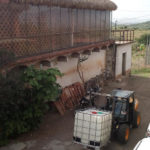
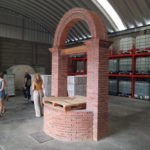
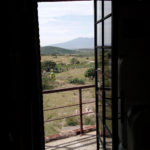
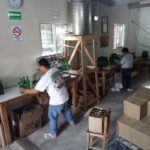
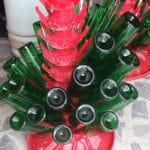
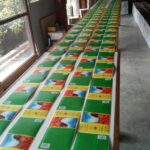
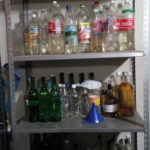
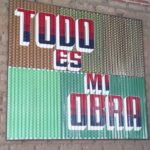
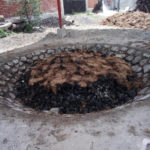
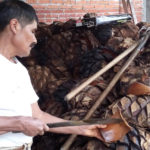

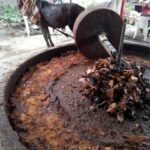
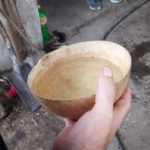

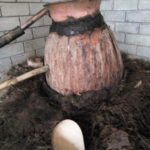
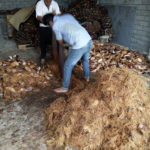
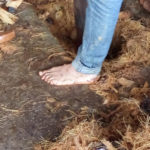

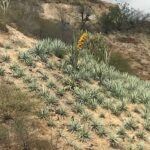
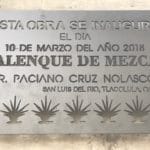
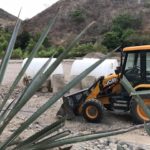
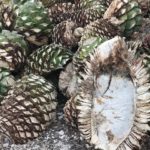
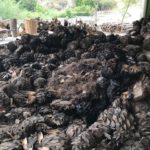
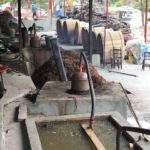
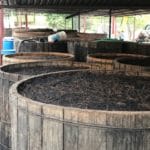
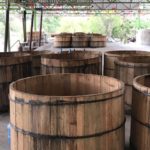
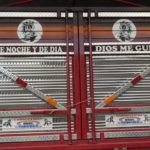



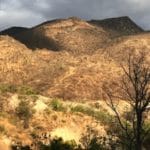
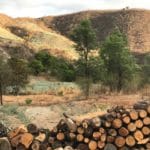
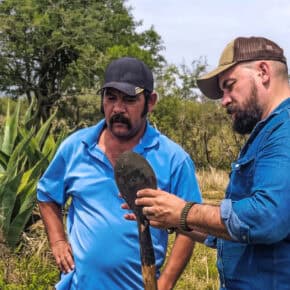
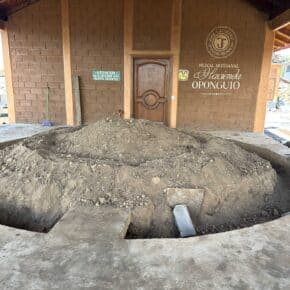
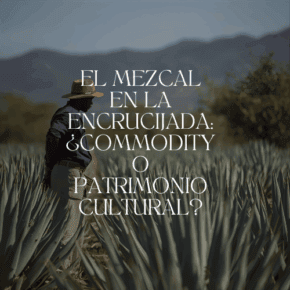








Your comment about visits to Los Javis being anything but brief is too true! Javier, Gloria. and all the folks are gracious hosts. Looking forward to seeing them again in 10 days. Astute writing, and thank you for sharing.
What does one do if one cannot find mezcal?
Location NW corner of california.
Love your website thank you..
Merchandise sucks, how about some long-sleeved t-shirts
More selections.
You must love your career path.
Gerald – there are some great online stores for buying mezcal – Caskers, Mercado del Mezcal, K&L Wines, Ramirez Liquor, to name just a few – they all ship within California and carry good selections.
Regards,
susan